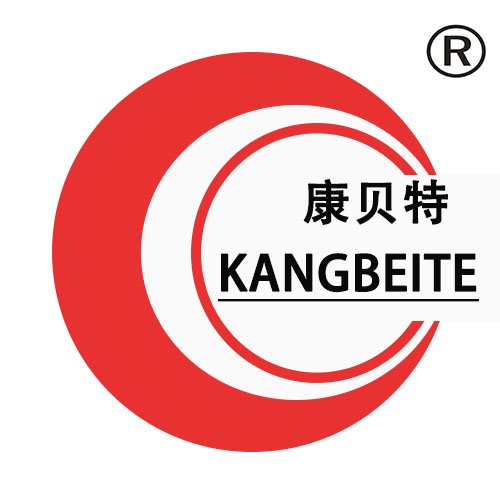Baliq tozalash liniyasi — o'simliklarni keyingi qayta ishlash (file, ichini o'tish, muzlatish yoki qadoqlash) uchun tayyorlash jarayonida o'simliklardan aravtalar, loy, qon va dengiz o'tlari yoki qum kabi chet el xususiyatlarini olib tashlash uchun mo'ljallangan avtomatlashtirilgan yoki yarim avtomatik tizim. Dengiz mahsulotlari qayta ishlash zavodlarida, balik ovlash kemalarida (katta masshtabli) va sohil qayta ishlash korxonalari uchun foydalaniladi, ushbu liniya oziq xavfsizligini saqlash (organik qoldiqlardan bakteriyalar o'sishini oldini olish), mahsulot sifatini yaxshilash (tashqi ko'rinishni yaxshilash va yaroqlilik muddatini uzaytirish), samaradorlikni oshirish (qo'lda mehnatni kamaytirish va qayta ishlash vaqtini qisqartirish) uchun muhim hisoblanadi. Baliq tozalash liniyasining asosiy komponentlari baliq turi (masalan, sardina kabi kichik pelagik baliqlar yoki kod kabi katta demersal baliqlar) va qayta ishlash quvvatiga qarab farq qiladi (kichik liniyalar soatiga 500–2000 kg, sanoat liniyalari esa soatiga 10 000 kg gacha) lekin odatda quyidagilarni o'z ichiga oladi: saralash stantsiyasi (baliqlar o'lchami va sifatiga qarab saralanadi, noto'g'ri yoki shikastlangan baliqlar olib tashlanadi), oldindan yuvish zonasi (yuqori bosimli suv nozzlari — 20–50 bar bosim — baliqlarni aravtalar va loydan tozalash uchun suvni purkaydi, suv temperaturasi sozlanadi, termal shokka yo'l qo'ymaslik uchun), cho'kastan (sovuq dengiz suvi yoki ichimlik suvi bilan to'ldirilgan, ba'zan oziqqa xavfsiz dezinfeksiya vositalari, masalan, xlor dioksid yoki ozon bilan, masalan, E. coli yoki Vibrio bakteriyalarini kamaytirish uchun), cho'tkali blok (oziq sifatli cho'tkalar — nylon yoki tabiiy tolali — baliq sirtini qiyin yopishgan loyni yoki tishlarini tozalash uchun ishlatiladi, cho'tka tezligi baliqning nozikligiga mos ravishda sozlanadi) va oxirgi yuvish zonasi (dezinfeksiya vositalari qoldiqlarini va qolgan zarralarni olib tashlash uchun past bosimli suv). Murakkab liniyalar tishlarni olib tashlash modullarini (losos yoki tilapiya kabi tishli baliqlar uchun) o'z ichiga oladi, o'tkir, aylanuvchi pichoqlar yoki yurishli valiklar bilan tishlarni terini shikastlamasdan olib tashlaydi. Oziq xavfsizligi uchun materiallarni tanlash muhim ahamiyatga ega: barcha kontakt sirtlari (tashuvchi lentalar, rezervuarlar, cho'tkalar, suv nozzlalari) 316 dan tayyorlangan, tuzli suv va baliq kislotalaridan korroziyaga chidamli yoki oziq sifatli plastik (masalan, rezervuarlar uchun polietilen), tozalash va dezinfektsiya qilish oson. Gigiena dizayni xususiyatlari qoldiq jamlanishini oldini olayotgan silliq, yoriqlar bo'lmagan sirtlarni, qulay qulash uchun rezervuarlarning qiyalangan polini, chuqur tozalash uchun o'chiriladigan komponentlarni (cho'tkalar, tashuvchi lentalar) o'z ichiga oladi. Ko'plab liniyalar foydalanilgan suvni tozalash va davolash tizimlarini ham o'z ichiga oladi, unda qattiq jismlarni olib tashlaydi va suvni dezinfektsiya qiladi, suv sarfini 40–60% gacha kamaytiradi — bu sohil obyektlari uchun muhim, chunki suv resurslari cheklangan bo'lishi mumkin. Boshqaruv tizimlari PLC asosida, ekranli interfeysli bo'lib, operatorlar qayta ishlash tezligini, suv bosimini va dezinfeksiya vositasi konsentratsiyasini kuzatishlari, ogohlantiruvchi signallarni (masalan, dezinfeksiya vositasi kamayganda) o'rnatishlari mumkin. Dengiz oziq xavfsizligi standartlariga mos kelish muhim: liniyalar FDA 21 CFR Qism 123 (Dengiz HACCP), Yevropa Ittifoqi EC 853/2004 va Yaxshi ishlab chiqarish amaliyoti (GMP) kabi me'yorida talablarga javob beradi, tozalangan baliq iste'mol uchun xavfsiz ekanligini kafolatlaydi. Xalqaro bozorlar uchun BRCGS (Birlashgan Qirollik Savdo Konfederatsiyasi Global Oziq Xavfsizligi Standarti) kabi standartlar bo'yicha sertifikatga ega bo'lish ko'pincha savdo do'konlariga talab etiladi. Xulosa qilib aytganda, baliq tozalash liniyasi dengiz oziq qayta ishlash korxonalariga xavfsiz, yuqori sifatli baliq mahsulotlarini samarali ishlab chiqarishga yordam beradi hamda qat'iy global oziq xavfsizligi qoidalariga mos kelishni ta'minlaydi — savdo, ovqatlanish xizmati va sanoat mijozlariga yangi yoki qayta ishlangan dengiz mahsulotlarini yetkazib berishni qo'llab-quvvatlaydi.




Huquqiy to'liqlik © 2025 Shandong Kangbeite Taom Pakerlash Masinasi Kompaniyasi Maxfiylik siyosati